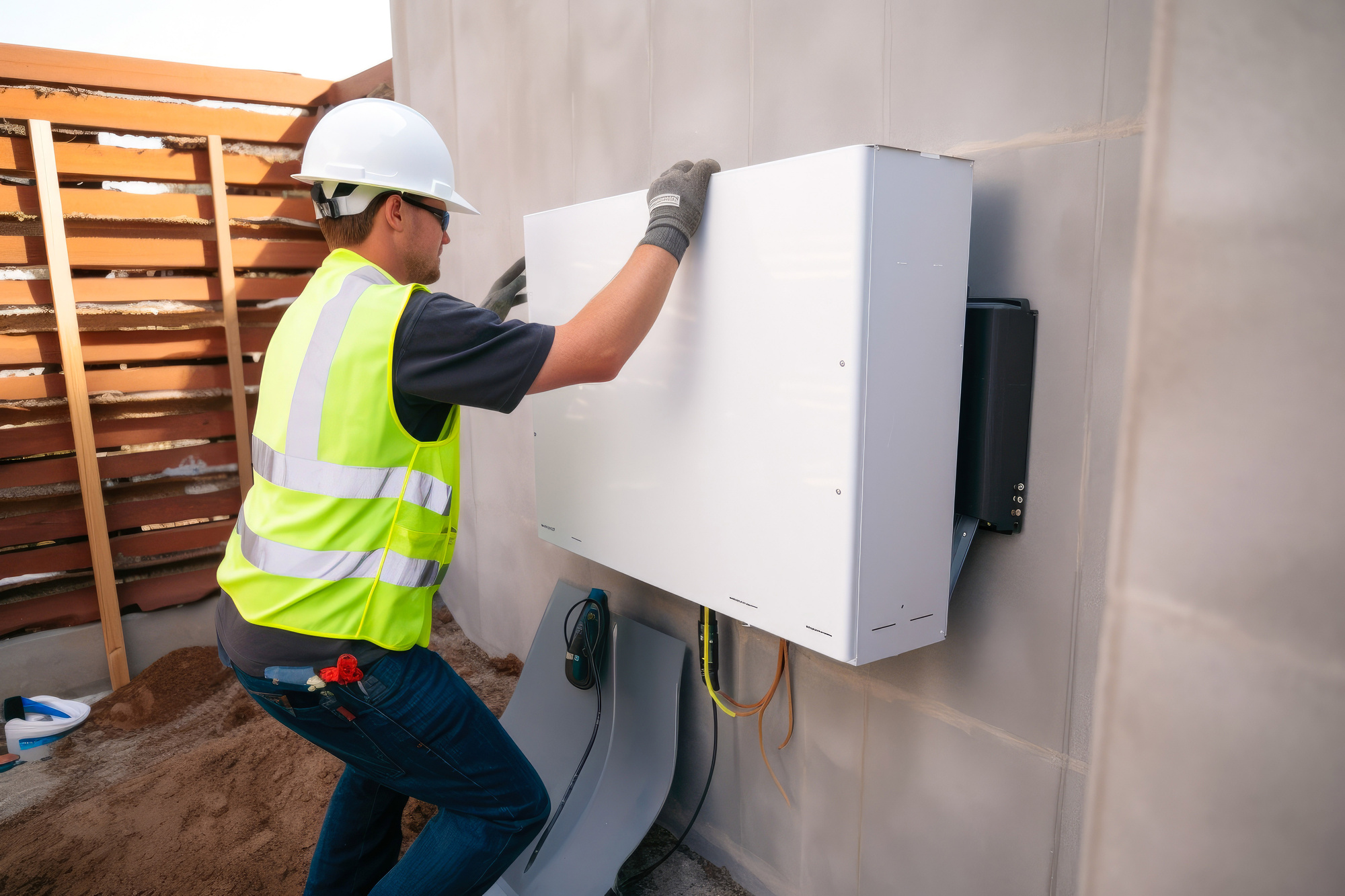
Smart energy storage, an ingenious solution in home energy management, is revolutionizing how we power our living spaces. It’s a quiet yet powerful shift toward smarter, more efficient homes. By harnessing this technology, homeowners cut down on energy bills. They also step into a future where homes contribute to a greener world.
Understanding Smart Energy Storage For Homes
At its core, smart energy storage is a technology that stores excess electricity for later use. It’s particularly useful in homes with solar panels, where energy generated during the day can be saved for night-time use. This system relies on a network of batteries, management software, and often an inverter.
The key components include high-capacity batteries, like those provided by SAJ, which store the energy. Alongside, there’s an intelligent management system that optimizes energy use based on household patterns. The inverter plays a crucial role, converting stored DC power back to AC for home use.
By integrating these components, smart energy storage brings a new level of efficiency to home energy management. It’s not just about storing energy, but also about understanding and adapting to your energy needs. This intelligent approach ensures a steady, cost-effective, and eco-friendly power supply for your home.
Benefits Of Smart Energy Storage In Residential Settings
Smart energy storage systems in homes are more than just technological marvels; they bring tangible benefits that make a real difference in daily living. Let’s explore these advantages:
Reduced Energy Costs
Smart energy storage systems enable homeowners to capitalize on energy when it’s cheapest. By storing excess solar power or utilizing low-cost electricity during off-peak hours, these systems effectively lower monthly electricity bills. This can lead to substantial savings over time, making energy storage a financially savvy investment for homeowners.
Enhanced Energy Independence
Homeowners with smart energy storage systems enjoy a greater degree of self-sufficiency. These systems store excess energy, reducing dependence on the main power grid. This is particularly beneficial during power outages or periods of high demand, as homes can rely on their stored energy, ensuring uninterrupted power supply.
KC Green Energy explains that an off-grid system eliminates homeowner’s dependence on the power grid. You’ll still have a good source of energy regardless of what happens to the grid. For this reason, solar energy makes a wise investment.
Environmental Impact
Smart energy storage is a step toward a greener future. By reducing dependence on fossil fuels and lowering carbon emissions, these systems contribute significantly to environmental conservation. Homeowners can take pride in reducing their carbon footprint, actively participating in the fight against climate change.
In essence, smart energy storage systems offer a blend of economic, practical, and environmental benefits. They represent a forward-thinking approach to home energy management, aligning personal benefits with broader environmental goals.

Choosing The Right Smart Energy Storage For Your Home
Energy Needs Assessment: Evaluate your home’s energy usage patterns. Opt for a system that aligns with your daily consumption and accommodates peak energy periods.
-
Storage Capacity Considerations
Factor in your home’s energy demands. Larger capacity batteries offer extended backup, crucial during prolonged power outages or high energy use phases.
-
System Compatibility
Confirm the system’s integration capabilities with existing setups, especially if solar panels are involved.
-
Budgeting For Quality And Features
Allocate funds wisely, balancing cost with essential features. Opt for a system that offers durability and efficiency without stretching your finances.
-
Researching Reliable Systems
Investigate systems with strong user feedback and established reliability. Look for systems that consistently perform well in similar residential settings.
Choosing the right smart energy storage system is a blend of practicality, foresight, and informed decision-making. It’s about aligning your home’s specific energy needs with a system that offers reliability, efficiency, and value for money, ensuring a wise investment in your home’s energy future.

Installation And Maintenance
Installing a smart energy storage system typically starts with a professional assessment. This ensures that the system fits seamlessly into your home’s existing electrical setup. It’s crucial to have a certified technician perform the installation, ensuring safety and efficiency.
Regular maintenance is key to the system’s longevity. This involves routine checks of the batteries and software updates to keep the system running optimally.
Lastly, monitoring your system’s performance helps detect any issues early. Most modern systems come with user-friendly interfaces for easy monitoring. Keeping an eye on your system’s performance not only ensures it operates efficiently but also maximizes its lifespan.
How To Make The Most Of Your Smart Storage
Smart energy storage systems can offer numerous benefits. Here are some ways to make the most of smart energy storage:
- Understand your energy needs
Analyze your energy usage patterns to determine when you use the most electricity, which helps optimize the charging and discharging of your energy storage system.
- Utilize time-of-use (TOU) pricing
Take advantage of TOU pricing plans offered by utilities. These plans incentivize consumers to use electricity during off-peak hours when rates are lower. A smart energy storage system can store energy during off-peak times for use during peak demand periods, helping to reduce electricity bills.
- Integrate renewable energy sources
This allows you to store excess energy generated during high production times for use when renewable generation is low, such as at night or during periods of low wind or sunlight.
- Backup power and resilience
Use your energy storage system as a backup power source during grid outages or emergencies. This provides continuity of power for critical loads and enhances the resilience of your home or business.
- Monitor and optimize performance
Regularly monitor the performance of your energy storage system and adjust settings as needed to optimize performance and maximize benefits. Use data analytics and remote monitoring capabilities to identify opportunities for improvement and fine-tune system operation.
Conclusion
Smart energy storage stands at the forefront of a home energy revolution, offering a blend of cost-efficiency, sustainability, and independence. Looking ahead, its integration into residential settings paints a promising picture. It’s a step toward homes that not only harness and utilize energy more efficiently but also contribute to a greener, more resilient energy landscape. The future of home energy is bright, with smart energy storage leading the charge.





